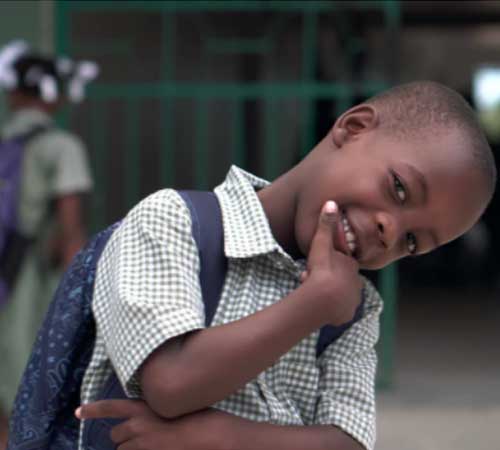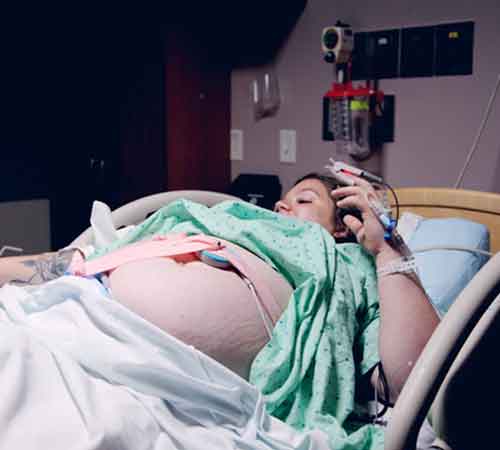
This year’s back-to-school will be anything but ordinary. But as in all things, preparation will be key to making the transition to school post the coronavirus pandemic smooth and most importantly, safe for you and your kids.
Here’s how to prepare your kids for back-to-school including the relevant questions to ask your child’s school management.
1. Embark On Adjusting Bedtime Before School Starts
The kids have been home for what? four months? More?
Abruptly returning to the routine of having everyone up at very early hours would be painstakingly difficult for anyone to do without struggles.
Do not take them by surprise.
Instead, comfortably nurture them back into submission by starting now and adjusting lights-out 20 minutes earlier each night, until you’re back on your usual school routine.
These are really necessary as they prepare to go back-to-school.
2. Let Your Kid(s) Know What To Expect
Inform your child/ren that because of the COVID-19, nobody knows for sure what school will look like when resumption date arrives.s Let them know that their school schedule might change depending on a number of factors.
School might be fully open as usual or open for fewer hours.
Children might be attending school for two or four days a week.
Because it’s still so hard to tell what will follow when kids are back-to-school, even though most of these safety precautions — always wear or have a facemask on.
Let them know that they need to avoid crowded areas.
Remind them to always have a hand sanitiser with you, wash your hands for at least 20secs, cough/sneeze into your elbow or a tissue and dispose of it. These are actions they most likely are already used to, and it’s advised to have your child prepared for the possibility of some intensity on these practices.
For instance: if your kids are aware that they will have a temperature check at the door and will be required to wear a mask in the classroom, it will position them to walk in feeling more confident and ready to face the new normal.
SEE ALSO: COVID-19-How-To-Create-A-Stress-Free-Work-From-Home-Schedule
3. Practice Mask Wearing For Long Periods
Yes, your kids have likely already been wearing masks when they’re out and about, but odds are they haven’t had to wear them for long hours at a stretch.
Take some time to get them used to wear masks properly in the weeks leading up to school resumption.
Discourage your kids from playing with the mask, putting their fingers in their mouths, or touching their faces—this is how the virus is transmitted.
Emphasise that it is even more important to do this at school, where germs can be more readily spread.
Also, consider sending a few extra masks in their backpacks or lunch boxes so they can change to a fresh one if there’s an accident with the first one.
4. Help Them Visualise Physical Distancing
Even for grownups, six feet apart is a tough concept to grasp. So, look for more creative ways to help your kids visualise the appropriate distance.
Demonstrate to your kids how far saliva can travel when talking, shouting, singing, or sneezing.
You can also lie on the ground (congratulations if you’re already six feet tall) if not, you can show how much further than that you’d need to be six feet apart i.e., “the length of my body plus my arm outstretched above my head”.
Think they still might not get it?
Get/make a six-foot-long walking stick, (or just use a measuring tape) and then have your child take walking steps to determine how many steps it would take them to cover the stick.
This is a simple way to help a child visualise what six feet is.
Then, have them memorise that counted number of steps so that when they hang out with their friends, they can walk-out the number of steps to realise their own six feet of physical distancing.
Read Also: Covid-19: Best self-care tips for mums
Health and safety questions to ask your child’s school before they go back-to-school.
Returning to school during/post the COVID-19 pandemic may feel uneasy – at least for a while.
But having safety plans and ensuring schools have the resources needed to see them through– can help keep the children, teachers, other staff safe, and your mind at rest.
As the school resumption date is nigh, make sure you have these questions handy.
Asks the school authority to ascertain if your child can safely return to school.
You know what to do if they fail to provide satisfactory answers.
1. What health and safety measures have the school set up to guarantee parents that the school environment is germ-free and safe?
2. What precautions are in place to ensure that an infected person does not walk into the school premises to put the rest kids at risk?
3. What measures have been put in place to ensure that physical distancing is maintained while they are in the learning space?
4. What measures are in place to ensure that your kids always have their facemasks on and their hands clean?
5. How often would their desks and other surfaces they might have to touch be disinfected for safety?
6. What measures are in place to ensure there’s no stampede during recess and closure time as the kids are usually excited around such times.
7. What risk-free fun activity can your kids safely engage in?
8. Are there quarantine facilities set up for students who suddenly develop fevers?
9. How informed are their staff on updated health and sanitation practices?
Do you still want more? Then check out:
The NCDC COVID 19 guidance for schools in Nigeria
WHO’s Key Messages and Actions for COVID-19 Prevention and Control in Schools.
Namaste!
Find more tips on parenting here.



